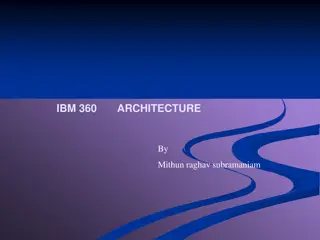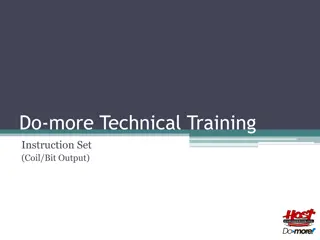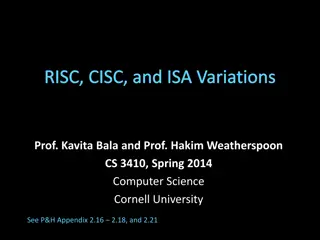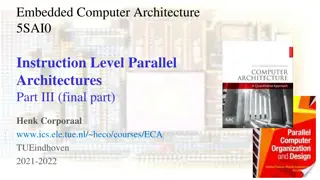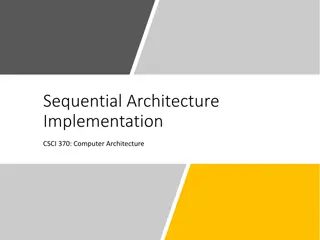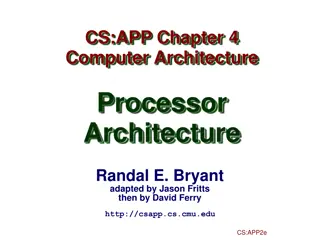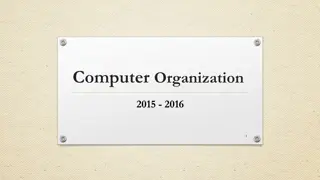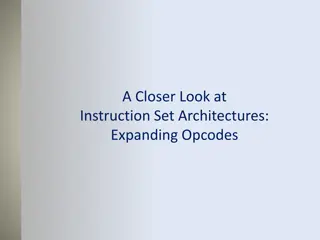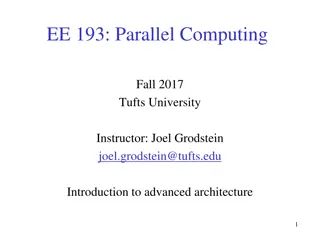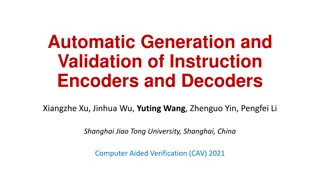Instruction Set Architecture and LC-3 Overview
Instruction Set Architecture (ISA) encompasses all programmer-visible components and operations related to memory organization, addressing, registers, and instruction processing. The LC-3 Overview covers memory addressing, registers, instruction opcodes, data types, and addressing modes. The ISA provides essential information for programming in machine language, while LC-3 operates with 216 memory locations, 16-bit addresses, and 16-bit addressability. The architecture includes registers like R0-R7, PC, CC, IR, MAR, and MDR along with key instructions and operating principles.
Download Presentation

Please find below an Image/Link to download the presentation.
The content on the website is provided AS IS for your information and personal use only. It may not be sold, licensed, or shared on other websites without obtaining consent from the author.If you encounter any issues during the download, it is possible that the publisher has removed the file from their server.
You are allowed to download the files provided on this website for personal or commercial use, subject to the condition that they are used lawfully. All files are the property of their respective owners.
The content on the website is provided AS IS for your information and personal use only. It may not be sold, licensed, or shared on other websites without obtaining consent from the author.
E N D
Presentation Transcript
Environmental Compliance Bhadriraju Subramanyam
Environmental Mitigation and Monitoring Plan The EMMP document was approved December 14, 2014 It shows the initial environmental examination (IEE), mitigation measures, monitoring measures, and timing and responsible parties [Excel sheet] Mitigation actions: Specific actions that will be taken to satisfy the IEE conditions Monitoring actions: The criteria that will be used to monitor (1) whether the mitigation actions have been implemented and (2) whether the actions are effective and sufficient Timing and responsibility: Specifies the parties responsible for these actions and schedules for these tasks
Why EMMPs* EMMPs provide a basis for systematic implementation of IEE IEE may be general but EMMP is specific EMMPs provide a framework for environmental compliance reporting For USAID activities failure to implement IEE conditions puts the activity in a non- compliance category [ends the activity] *Source: ENCAP Factsheet: EMMPs [www.encapafrica.org/meoentry.htm]
Implementing EMMPs Establish accountability: Oversight by a qualified staff/project member Workplan integration: Include EMMP training in environmental compliance into project workplans Budget integration: Develop mitigation and monitoring costs as part of EMMP compliance Management commitment and staff awareness: Project management must clearly communicate the importance of EMMPs





